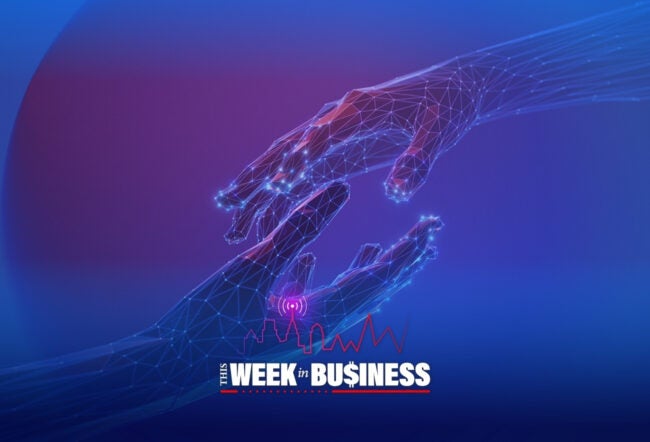Animal feed in Zambia. Cookies in South Africa. Medical records systems in Botswana. Peanut processing in sub-Saharan Africa and Latin America.
In regions scarred by intractable poverty, innovative programs to build new sources of wealth through these four businesses are providing lessons for entrepreneurs hoping to create new markets and economic opportunity. In a paper titled, “Business Models: Creating New Markets and Societal Wealth“, leaders of Wharton’s Societal Wealth Program (WSWP) outline the critical elements of entrepreneurial wealth building based on nearly 10 years of field research supported by Wharton alumni.
The WSWP initiatives are designed to move beyond a charitable aid model for combating poverty by creating economic enterprises that lead to self-sufficiency rather than dependency and that will have a major and lasting impact. “There are plenty of charities doing things for free. What we are attempting to do is create poverty reducing businesses,” says James D. Thompson, director of the WSWP, who coauthored the paper with Wharton management professor Ian C. MacMillan.
Uncertainty is a major element of any entrepreneurial undertaking and the social wealth projects — with the goal of improving society in addition to making money — are all the more unpredictable. “If you’re going to do something that’s really going to make a difference and it’s bold and highly innovative, by definition it’s [also] going to be highly uncertain,” MacMillan notes.
Since its launch in 2001, WSWP has been involved in 10 projects and is in the early stages of evaluating two others. The four cases highlighted in the paper represent a range of outcomes from success to termination. Many of the other six projects were disengaged or significantly altered — a rate Thompson says is comparable to findings on typical entrepreneurial startups. “You’re likely, if you follow this approach, to encounter more failures than successes,” he notes.
MacMillan adds that the principles that apply to building societal wealth should not be limited to use only in poor nations or developing economies. “We have misery in the United States,” he says. “There are many areas of high unemployment in appalling ghettos, where single mothers are trapped in environments where the best they can do is eke out a living. It’s no joke that we can apply the same principles here.”
The four projects detailed in the paper range from a highly successful animal feed effort in Zambia to a proposal to improve nutrition through better peanut processing that was never put into practice. The feed project used linear programming to calculate optimal feed mixes resulting in high-quality, lower-cost feed for farmers who were able to expand chicken production. Starting with six men mixing feed on a cement floor, the effort is based on a network of small producers, rather than a conventional high-volume model.
In South Africa, WSWP backed a project to train uneducated single mothers to work in bakeries making high-end healthy cookies for sale to tourist hotels. The authors call this program “marginally successful” and note that it is now directing sales toward exports to developed countries. The authors write that the “jury is still out” on a project in Botswana designed to use electronic medical records to improve care for HIV/AIDS patients by allowing nurses to make more diagnostic and prescriptive decisions, which in turn frees up doctors for administering higher-level services.
The WSWP ultimately dropped a plan to improve nutrition with more effective peanut processing. The idea was appealing because peanuts could provide high nutritional value to the diets of people throughout sub-Saharan Africa and in Latin America. However, an early analysis revealed that high transportation costs and the likelihood of losses through theft at various points in the logistics system made it impossible for the project to sustain itself financially. “This is a great example of one of those ideas that was initially put to us that we thought had enormous potential,” Thompson says. “But during our due diligence and modeling process, we just couldn’t find a way of getting the business model to make financial sense.”
Lessons for Entrepreneurs
According to MacMillan, entrepreneurs working in social enterprises need to maintain a sense of responsibility in addition to factoring in the many business considerations that typically go into a start-up. Failure in this environment can be measured in costs to the human spirit as well as financial terms. “You don’t just rush in and say you are going to help without thinking how you will actually be of help,” he points out. “Secondly, if you find that your program is not working, you need to have preplanned how to exit without doing harm or leaving people in the lurch.”
The authors suggest that the lessons learned so far through WSWP can carry over to entrepreneurial work in traditional business sectors and could open the way for new economic opportunity. They maintain that the ideas raised in the WSWP business models are relevant to companies introducing new technologies, such as nanotechnology, or creating sub-markets in rapidly developing economies or industries — for example, Chinese and Indian teenage consumers. The principles would also be useful in coping with social, economic or demographic change, such as the rise of social networks on the Internet.
In addition to mapping out a plan to succeed, the guidelines developed through the WSWP also recommend a plan to disengage from societal wealth projects. MacMillan maintains that it is critical to plan from the start how to get out of a project that is not working in order to avoid suffering on the part of the people who would have benefited from a successful program. “The idea here is leave a minimal footprint,” he says. “A lot of these projects go in and fail and leave a trail of damage behind the abandonment. You just should not do that.”
In addition to anticipating failure, societal wealth entrepreneurs should try to plan for unanticipated second-order effects. Some are positive, such as improved education and better health care and nutrition that come with higher wages. Others are negative. For example, the feeds project has created an odd problem: As chicken production increases, farmers have chicken feathers to dispose of because there is no existing method for them to be recycled. The WSWP is now investigating whether the feathers can be burned as fuel.



